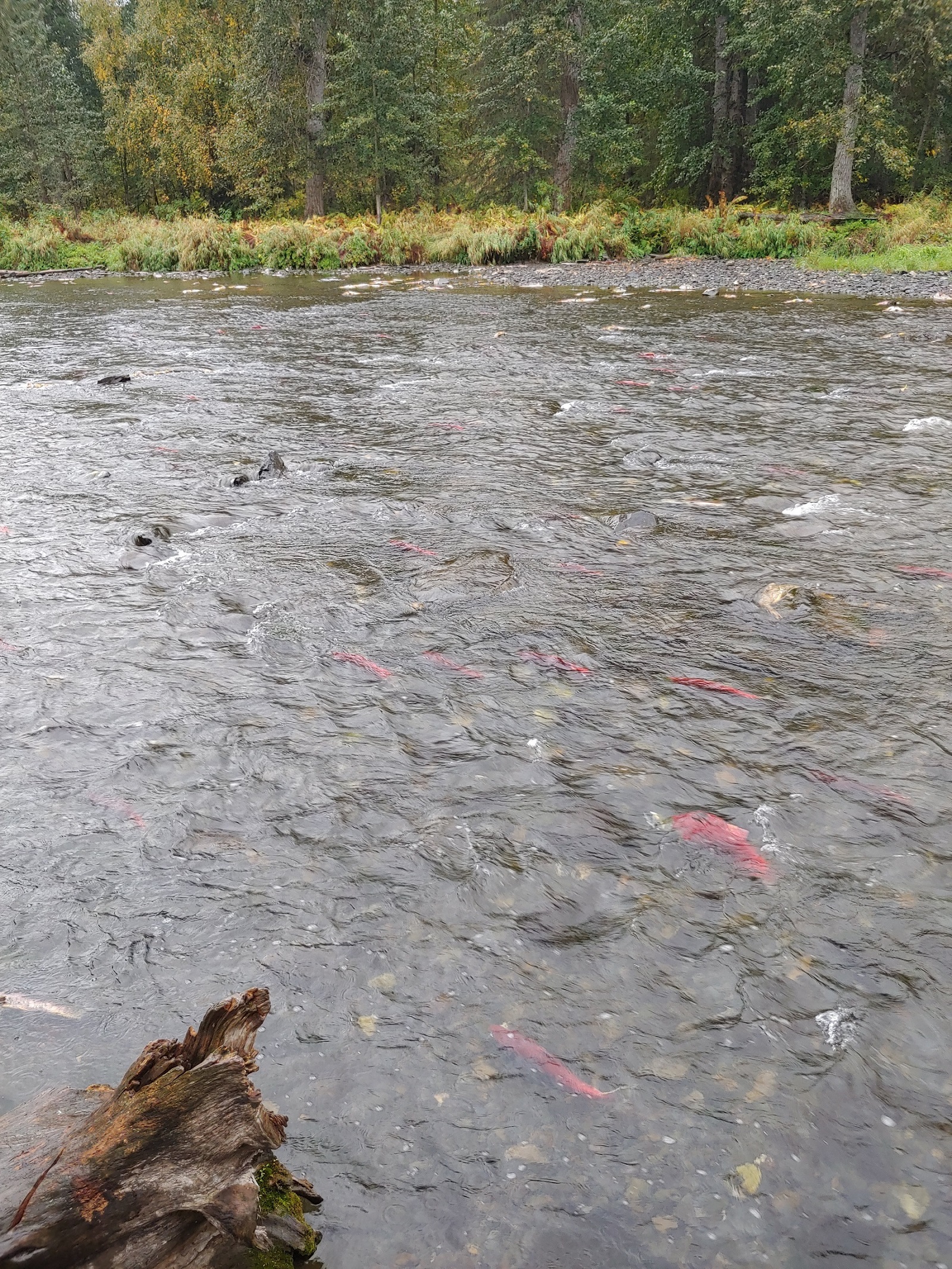Sockeye Salmon
Sockeye comes from the native word suk-kegh, which means red. This was a poor translation from the Coast Slavish language. There are seven Pacific Salmon species in Alaska, the Sockeye being one of them. The Sockeye are also referred to as red, kokanee, and blueback salmon.
Characteristics
The Sockeye are the smallest of the Pacific salmon species. They range from 18 to 31 inches in length and weighing 4 to 15 pounds. (AlaskaGov) As the fish transition from river to ocean and back again, their appearances change as well. A sea bound salmon has silvery sides and a blue-green back with a white underbelly.
Once they return to watersheds to spawn, the salmon’s body starts to change into it’s brilliant hue of red, while the head takes on a dark green color. The breeding-age males typically have a humped back, hooked jaws, and tiny but visible teeth. In contrast, juvenile fish are known to have dark oval parr marks on their sides.
Life Cycle
All species of Pacific salmon are anadromous. The Sockeye lives in the ocean and enters fresh water to spawn. Most sockeye salmon spawn during June and July in Alaska. Lakes, rivers, and streams are where sockeye usually spawn. Once reaching their freshwater drainage of choice the salmon will between 2,000 and 5,000 eggs.
Both the male and female will die just a few weeks after spawning. During the later portion of their breeding you will see them actively deteriorating as they slowly die. Their remains then become fertilizer for the trees nearby that support the health of the rivers they swim.

